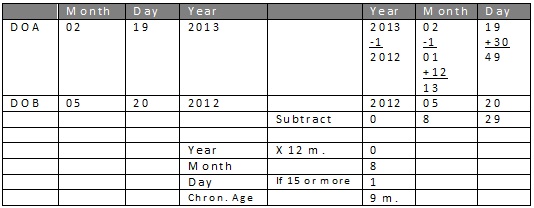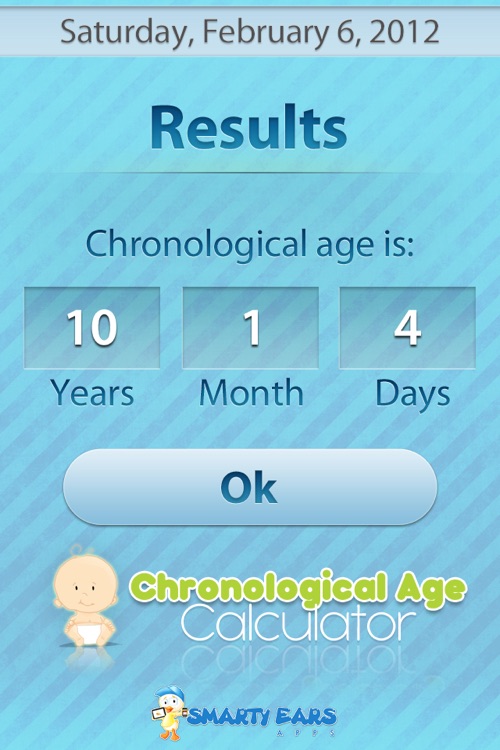


In particular, Yale Medical School researcher, Morgan Levine, Ph.D. Science Supports Biological Age Management!
Chronological age caluclator how to#
In order to understand how to help increase one’s biological age, it is recommended to first use a biological age calculator to measure one old one seems (aka their biological age) and if the biological age calculator reveals a number that is more than one’s chronological age, to figure out what lifestyle changes are needed to lower one’s biological age and increase a person’s life expectancy. To get a better understanding of how health differences can be so vast among individuals of the same chronological age, experts are looking at biological age instead. We know, for example, that one 65-year-old may not be as healthy as the next, just as 40-, 50-, and even 25-year-olds can have varying degrees of health. This definition may seem a bit morbid, but now, experts are exploring new ways to look at aging. It’s also defined as the progressive deterioration of a living thing, in which the risk of mortality increases exponentially. Yet, from a scientific standpoint, age is far more than just a number. For most people, age itself is an uncomplicated matter: it’s the number we see on our birthday cakes – the difference between the current year and the year of our birth. Let us know the happiness time brings, not count the years”Īt the simplest level, aging is the process of becoming older. Next Steps – Turn Back the Hands of Time Now.You Can Feel Younger Than You Think – In Conclusion.Science Supports Biological Age Management!.only 30-80% achieved positive scores when chronological ages were used.Īt 24 months, 90% of premature infants scored similarly to at term babies at developmental tasks.80-99% of premature infants achieved positive scores on age-specific developmental tasks (with corrected age).found that in the first 12 months of life: Catch up period (weeks) = Prematurity weeks x 10įor example, in the case of a premature baby born 8 weeks early, it is estimated they would require 80 weeks (1 year and 7 months) to catch up.The prematurity weeks are multiplied by 10 to give the number of weeks needed to correct the development gap from prematurity. There is however, a formula that may be used to estimate for how long the corrected age may be used. Many professionals use both the chronological and corrected age until the infant reaches 24 – 36 months, a time at which is it considered that generally, the most premature infants have caught up and they are reaching developmental milestones similarly to infants born at term. Prematurity is a notable risk factor in a child’s development so close monitoring will take place, with professionals referring to both the chronological and adjusted age. Returning to the example of a premature baby born at 32 weeks, when their chronological age will be of 4 months, their corrected and developmental age will be of 2 months. * Where weeks of prematurity = 40 weeks – gestational age at birth Corrected age = Chronological age – Weeks of prematurity*.This is also known as adjusted age or post conceptual age. The chronological age is the number of years, months, weeks and days from the actual birth while the corrected age is calculated by subtracting the weeks of prematurity from the chronological age. Studies have shown that corrected age is even the more relevant when it comes to the development of motor skills compared to cognitive skills, with premature babies being found to score significantly lower on motor skills than on mental skills in the first 12 months of life. So, the corrected age allows an accurate assessment of their developmental abilities. A premature baby might experience developmental milestones at different times from a full-term baby, usually to their corrected age.Ī premature baby born at 32 weeks gestational age will require a further 8 weeks of growth before their brain neurological system start to function similarly to those of a newborn. If a baby has been born early, the corrected or developmental age will need to be accounted for, in parallel with the chronological age from birth, for a period of time, up to 24-36 months.


 0 kommentar(er)
0 kommentar(er)
